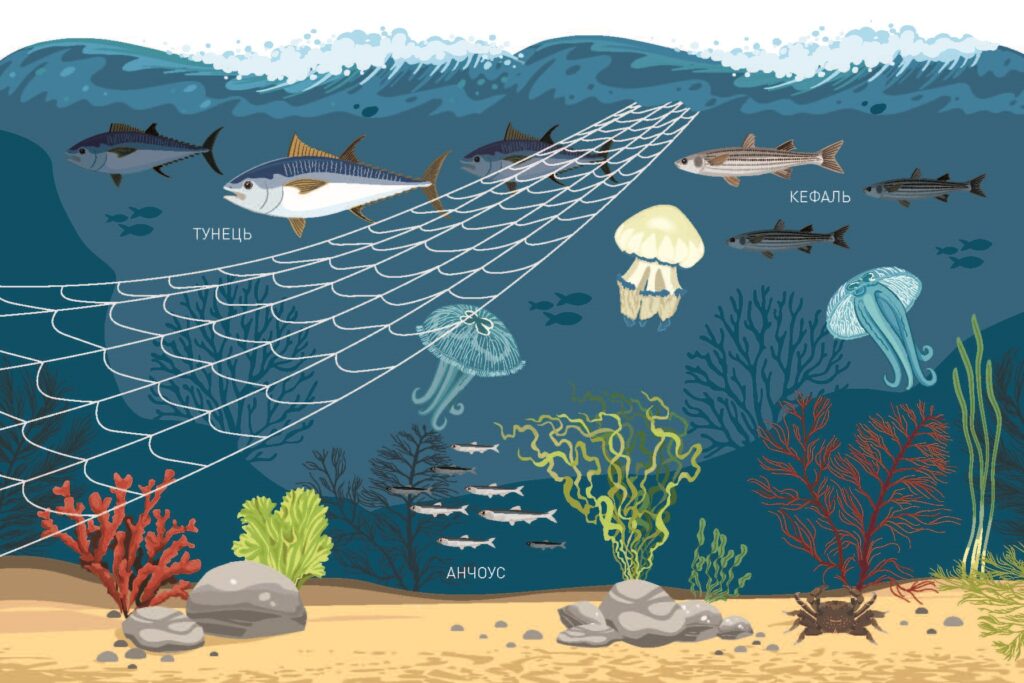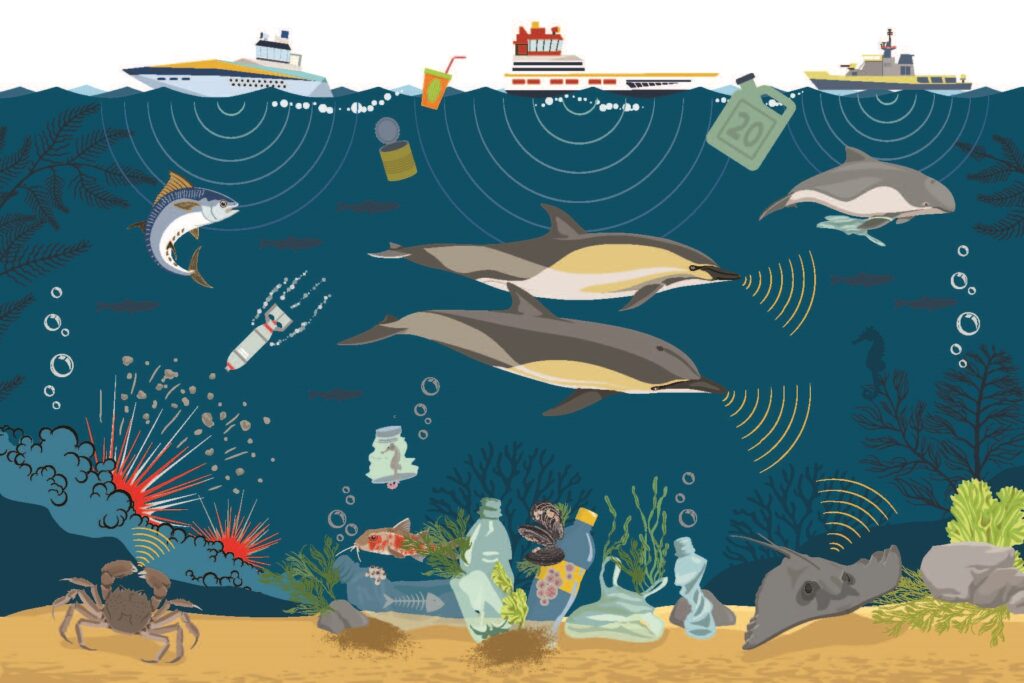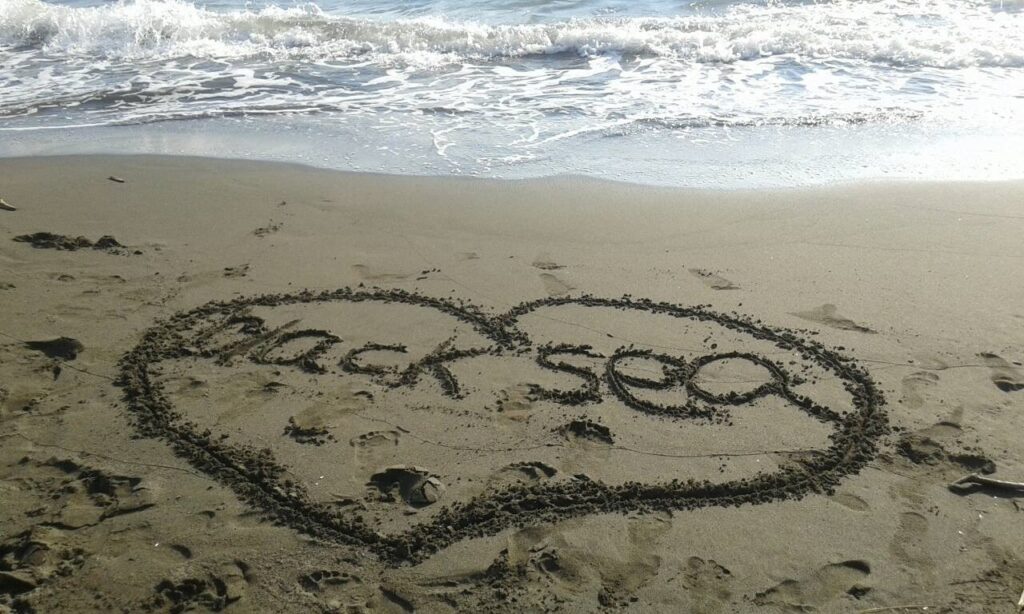Five important facts about the Black Sea
- How clean is the water in the Black Sea?
- Is there still fish in the Black Sea?
- How can global warming affect seas and coastal cities?
- Is it true that there is a lot of litter in the sea?
- How can the Black Sea be protected?
How clean is the water in the Black Sea?
The EU EMBLAS project has carried out a study about presence and concentration of chemical pollutants in the Black Sea (with regard to water, sea bottom and living organisms). Specifically, the project examined the substances recognised by the EU as mandatory for control: persistent organic substances, pharmaceuticals, pesticides, biocides, flame retardant substances, industrial chemicals and their degradation products.

Out of more than 2,100 known pollutants, 124 have been found in the water samples. Contaminants included petroleum products from maritime transport, water repellents used in production of paper cups and packaging, mercury and dioxins. Pesticides used against weeds and insecticides such as fipronil, which is particularly toxic to bees, have also been found. The highest concentration of pesticides was recorded off the coast of Georgia.
Traces of pharmaceuticals for treating arrhythmia and hypertension, as well as chemicals contained in plastic bottles and sunscreen, which are harmful to marine inhabitants, were found as well.
Compounds of harmful organophosphates which could be found in almost all products we use daily, like textiles, furniture, computers, etc., were recorded at every monitoring station. The highest levels of concentration of these substances were discovered in Danube Delta, the river Dniester and in the Georgia’s coastline waters.
If the quantity of chemicals exceeds a certain level, they become destructive to all living organisms and disrupt the reproduction and development cycles of the marine creatures. For example, significant concentrations of chlorine-containing pesticides, toxic dioxins and mercury were found in the tissues of dead dolphins. For all such substances a toxicity threshold is set, and if it is exceeded, it is necessary to remove these substances from production, improve wastewater treatment or legally prohibit their use.
Some good news too! According to the EU EMBLAS project, the processes of restoration of the sea vegetation and animal species – indicators of good environmental conditions – have begun. For example, the red agar-bearing algae Phyllophora can be seen developing and in the coastal zones one could once again find crabs, shrimps and seahorses.
For more interesting facts about the Black Sea take a look at the book “Secrets of the Black Sea“.
Is there still fish in the Black Sea?
There are more than 200 species of fish in the Black Sea, 30 of them are valuable commercially, such as anchovy, sprat, clupeonella, herring and goby. The largest Black Sea fish is beluga, one of the seven representatives of the sturgeon family in the Black Sea.

However, some of the fish species become rare and are endangered. For example, the seahorse became almost extinct. Tens of thousands of fish were dried annually as souvenirs for tourists. After the seahorse was included in the Red Book of Ukraine and its fishing was banned, its numbers began to grow.
Due to the fact that sturgeon’s meat and its black caviar are considered valuable delicacies, excessive fishing decreased the sturgeon population. All seven of the sturgeon species in the Black Sea are under threat of extinction. They are now included in the Red Books of all the Black Sea countries, and their fishing is illegal.
Every year a large amount of fish is caught, and half of the total catch comes from Turkey. Anchovy, mullet, so-iuy mullet and predatory mollusk rapana constitute the bulk of fishing in the Black Sea. As a result of excessive fishing, tuna and mackerel have already disappeared from the Black Sea, and sturgeons are on the verge of extinction. Sturgeon fishing is prohibited in all the Black Sea countries, but poachers constantly violate this ban. The stocks of kalkan and katran flounder are rapidly decreasing; they are also included in the Red Books of the Black Sea countries. During the EMBLAS project surveys, the DNA of the European sturgeon and beluga was found in many samples throughout the Black Sea – this means that some of these unique fish are still swimming in the Black Sea.
The Black Sea is also home to the longnose spurdog, rays, dolphins and 30 species of jellyfish. Large specimens include the widespread moon jellyfish (Aurelia) and Rhizostomae. Aurelia occasionally causes mild burns that go away within an hour, and a larger Rhizostomae can cause painful but not life-threatening skin lesions that disappear in a few days.
Almost 5600 species of living organisms exist in the Black Sea, which is approximatively two times less than in the neighbouring seas. This is also due to the low salinity and comparatively cold climate.
For more interesting facts about the Black Sea take a look at the book “Secrets of the Black Sea“.
How can global warming affect seas and coastal cities?
One of the dangerous consequences of global warming will be a rise in sea level: first, glaciers melt by adding additional volumes of water to the Global Ocean, and, secondly, water expands when heated. Odessa and other Black Sea cities may well share the fate of the flooded Olvia. This may not happen in a year or even in a hundred, but in several centuries.
The Black Sea has its own cycles of water level fluctuations. For example, since the late 1990s, the level of the Black Sea has dropped by an average of 1 cm. This may be due to global climate change – the warmer the sea is, the more water evaporates from its surface. In addition, the warmer and drier the year is, the less water reaches the sea from the rivers flowing into it. The river flows into the Black Sea is much less than 100 years ago. This is because most of the water volume of the Dnieper, Bug, Dniester and Danube is channelled to field irrigation for agriculture purposes. As the temperature rises, in land water consumption increases, while its runoff from the upstream decreases. Heating water in shallow coastal areas can reduce the solubility of oxygen in water. Whole spots of “dead water” (anoxic zones) are formed, where the oxygen saturation is too low for the survival of fish, crabs and shellfish, and they die in big numbers.
With a decrease in river flow into the Black Sea and an increase in ocean levels, salinity in the Black Sea may increase, which means that the Black Sea will become more attractive for settlement by inhabitants from the Mediterranean. Each year, more Mediterranean species such as barracuda and sea turtles swim occasionally into the Black Sea.
For more interesting facts about the Black Sea take a look at the book “Secrets of the Black Sea“.
Is it true that there is a lot of litter in the sea?
With the increase in the use of plastic over the past 20 years, the amount of litter in the oceans has increased hundreds of times – about 8 million tons of plastic find its way into the ocean every year. Circular currents concentrate it in certain places, creating “garbage islands”.

The Black Sea is littered twice as much as the Mediterranean and this is due to the transfer of plastic with the runoff of large rivers and the relative isolation of the Black Sea. 85% of all trash in the Black Sea is plastic. Light plastic bottles and bags, floating on the surface of the water, under the influence of ultraviolet rays and temperature gradually disintegrates into smaller fragments, which eventually settle at the bottom of the sea.
Garbage is a problem for marine ecosystems. Firstly, sea creatures often perceive it as food, swallow it, and it clogs their digestive system. The seagulls suffer extensively from this. Secondly, plastic often absorbs organic pollutants, which enter the marine creatures’ organisms and poisons them. Thirdly, animals can get trapped, lost and even die in the trash.
It is particularly important to know that in addition to large marine debris there is also microscopic litter called microplastic. . Almost two-thirds of microplastic are formed as a result of tire wear and subsequently washed off the roads. About one-fourth of microplastic comes from the sewers as a result of washing synthetic fabrics, from which microfibers are peeling off. Small plastic granules are often added to household chemicals, as well as to creams, scrubs and toothpastes, which also then go down the drain. The EU EMBLAS project scientists have recorded significant deposits of micro plastic at the bottom of the Black Sea.
Marine life is also affected by the noise pollution: the sounds of container ships, tankers and trawlers. In the areas of intensive navigation, there is an incessant underwater hum, similar to one heard on highways.
The most dangerous are the so-called impulse sounds. When a short signal of huge strength is emitted, it is deafening and leads to concussion. For example, air cannons used in underwater seismic exploration for minerals can produce pulses that are louder than the sound of a space rocket. Therefore, acoustic trauma to the inner ear received by cetaceans during military exercises or seismic surveys could be one of the reasons for them becoming grounded. They lose their ability to navigate using echolocation and distinguishing between the land and the sea.
For more interesting facts about the Black Sea take a look at the book “Secrets of the Black Sea“.
How can the Black Sea be protected?
The European Union is funding several important initiatives that help preserve the Black Sea ecosystem.

“Improving Environmental Monitoring in the Black Sea” (EU EMBLAS) project, implemented by UNDP. The overall goal of the project is to improve the protection of the Black Sea environment in Georgia, Russian Federation and Ukraine. The project studies and surveys the sea, evaluates its “health”, and together with environmental activists fights marine litter, especially plastic waste. Cleaning beaches, and recycling marine debris into paving tiles are only few of the multitude of environmental actions organised by the project..
The European Union Water Initiative is a project that helps to improve water management, make water cleaner and more accessible for all. The program works with governments in order to create a modern legislative and regulatory framework. It engages in water monitoring, including establishment of modern laboratories to analyse the quality of water, procures equipment, provides technical support and trains staff.
EU Cross-border Cooperation Program in the Black Sea countries aims to promote economic development in the region, protect the environment, mitigate the effects of climate change and combat plastic waste pollution in coastal areas.
Undoubtedly, international assistance and cooperation are very important, but every one of us can also contribute to the preservation of the Black Sea. For example, reduce the use of plastic packaging, do not throw away garbage in places that are not intended for this, take part in cleaning the shores, and also avoid using detergents and cosmetics with phosphates and phosphonates, which leads to the “blooming” of the water.
More campaign pages:
Interested in the latest news and opportunities?
This website is managed by the EU-funded Regional Communication Programme for the Eastern Neighbourhood ('EU NEIGHBOURS east’), which complements and supports the communication of the Delegations of the European Union in the Eastern partner countries, and works under the guidance of the European Commission’s Directorate-General for Neighbourhood Policy and Enlargement Negotiations, and the European External Action Service. EU NEIGHBOURS east is implemented by a GOPA PACE-led consortium. It is part of the larger Neighbourhood Communication Programme (2020-2024) for the EU's Eastern and Southern Neighbourhood, which also includes 'EU NEIGHBOURS south’ project that runs the EU Neighbours portal.

The information on this site is subject to a Disclaimer and Protection of personal data. © European Union,







